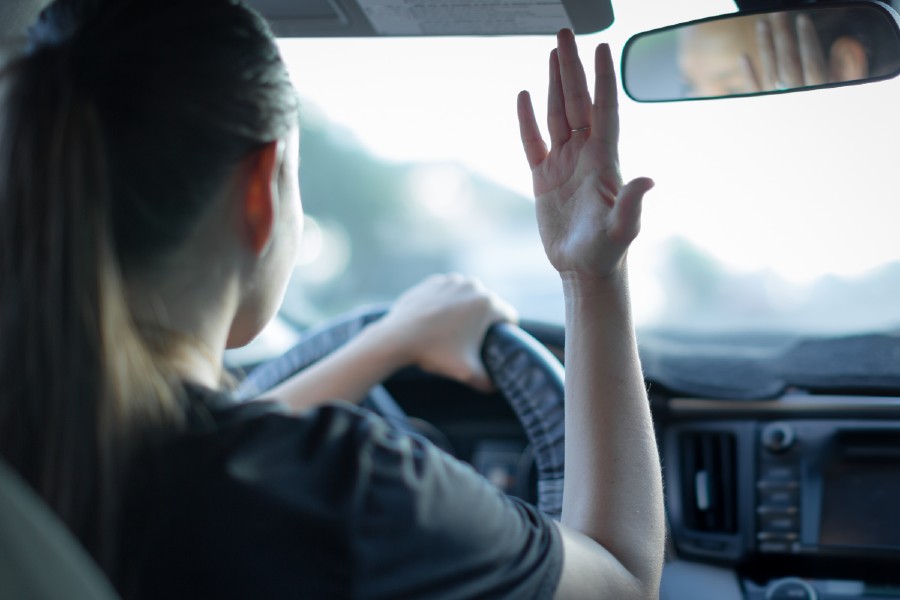Road rage accidents are not like other crashes caused by driver error or negligence. They are due to extreme reckless or aggressive driving that turns into a criminal act. The at-fault parties in these incidents are out-of-control, making them very dangerous to others. If you find yourself on the receiving end, do you know how to handle a road rage accident?
At High Stakes Injury Law, our car crash attorneys in Las Vegas are ready to help if you have been injured in a road rage crash. We have extensive experience – more than 30 years – representing injured victims. If we take your case, we will fight hard to recover maximum compensation on your behalf.
What Behaviors May Qualify as Road Rage in Nevada?
Nevada does not have a specific legal definition for road rage. However, state law prohibits certain types of conduct behind the wheel.
Reckless Driving
Nevada law prohibits five forms of reckless driving, such as operating a vehicle with willful or wanton disregard for the safety of others or property. (The other four forms of reckless driving involve trick driving displays and speed contests.)
Reckless driving may begin with an already stressed individual who reacts to the way someone else is driving. For example, a driver who is being tailgated may get angry and do a brake check (slamming on the brakes suddenly) to get the other driver to back off.
Whatever their initial intentions, drivers who engage in reckless driving can be charged with a misdemeanor. The first offense comes with a fine between $250 and $1,000 or a fine and imprisonment for up to six months. Subsequent offenses carry harsher penalties.
Aggressive Driving
This behavior is also a crime. The potential penalties and charges are the same as for reckless driving. Nevada state law lists several examples of aggressive driving that are against the law, such as:
- Failing to obey traffic-control signals
- Passing a vehicle on the right by driving on an unpaved portion of the road
- Following another car too closely
- Failing to yield the right of way
- Improper or unsafe driving on a highway
Other examples of aggressive driving include:
- Weaving in and out of traffic lanes at high speed, usually without signaling
- Running red lights, often without taking time to check for other traffic
- Speeding up to cut in front of another driver and then slowing down
- Brake checking – stopping with no warning – to make a point to a tailgating driver
- Laying on the car horn excessively, such as holding it down for a long time
If an aggressive driver’s behavior leads to a crash that causes the death or serious injury to another person, the at-fault party could face significant fines and jail time.
Assault and Battery
Many people may use these terms interchangeably, but they are slightly different.
- Assault: When a person hurls verbal threats or makes another person fear that they are about to be physically harmed, it may be considered an assault under Nevada state law.
- Battery: When verbal threats turn to actual use of force, such as purposely crashing into a car or breaking a window, the perpetrator could face severe penalties.
How to Handle an Incident of Road Rage
People are more likely to have road rage when facing outside stressors at home or at work. However, drivers still have a duty to prevent harm to others and themselves. Sometimes this may mean not getting behind the wheel until the situation causing stress has resolved.
Regardless of the reason, road rage can be a terrifying experience for any driver. Here are some ways you can help avoid becoming a victim:
- Avoid getting angry: The best thing you can do is to get out of that driver’s way calmly and safely.
- Do not engage: Reacting to, or even looking at, an aggressive driver could put you in more danger.
- Practice driving safely and politely: In short, always try to be the adult, even under stressful conditions.
- Do not go home immediately: If an aggressive driver continues to follow you, drive to a nearby police station.
Seeking Compensation After a Crash Involving Road Rage
If you are involved in a road rage crash despite your best efforts to avoid it, you would likely be eligible to seek compensation for your damages, including:
- Emergency medical care, including transportation by ambulance
- Diagnostic testing, such as MRIs and CT scans to determine the victim’s injuries
- Ongoing medical treatment to help the victim in his or her recovery
- Loss of job earnings while the victim recovers from his or her injuries
- Future medical care or surgical interventions that may be required
- Loss of earning capacity if the victim can no longer work or must change careers
- Property damage caused by the at-fault driver’s actions
- Post-traumatic stress disorder (PTSD) and other pain and suffering damages
In Nevada, a driver who causes a road rage accident through reckless or aggressive driving may also be guilty of gross negligence. This assessment can be important in an injury case as it may enable victims to receive additional compensation under the law. For example, a driver may have engaged in gross negligence if he or she aggressively chased a vehicle and deliberately ran a red light to continue the pursuit, causing a crash.
Our Attorneys Are Ready to Protect Your Rights
After a road rage accident, you may be unsure what to do next to protect your legal rights. At High Stakes Injury Law, our team of legal professionals is always prepared to help.
Contact our law office to discuss your situation with one of our experienced attorneys. This initial consultation is completely free, and there is no obligation to file a claim. If we represent you, there is no risk to you. We charge nothing upfront and do not get paid unless you do.


